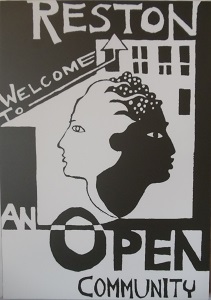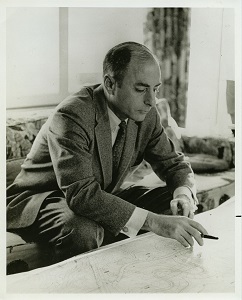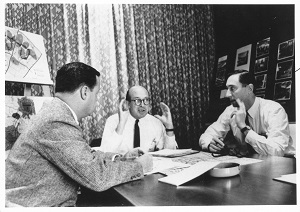

The Making of Reston and Columbia
Reston, Va., and Columbia, Md., were founded in the 1960s with similar visions for inclusive, connected communities
"Distance and Decline: The Case of Petersburg, Virginia," Working Paper No. 18-16, October 2018
Towns in Progress
Reston and Columbia continue to be thriving communities that must navigate new challenges that come with age. As each passed its 50th anniversary, conversations began about redevelopment.
Part of Reston's continued vibrancy stems from its location in a region experiencing rapid economic growth, and more recent planning has had to account for that growth. A central innovation of Reston's current Comprehensive Plan, adopted in 2015, was a minimum 1-to-1 ratio of residential to nonresidential development for the areas around Reston transit stations, including Reston Town Center. According to Robert Goudie, executive director of the Reston Town Center Association, the ratio — which had not been widely attempted in other mixed-use developments — was designed to set a minimum requirement on residential in the downtown and thereby "create a healthier jobs-to-households ratio in what previously were areas zoned largely or exclusively commercial and mitigate congestion."
The Washington, D.C., Metro extended a line to Reston in 2014, and Fairfax County continues to review key elements of the Comprehensive Plan in anticipation of additional transit development and population growth. Increased demand and redevelopment costs raise the cost of living and challenge Reston's original commitment to affordability.
The "Downtown Columbia Plan" details Columbia's planned development from 2010 through 2040. This plan balances growth with Rouse's original principles and details a process for community involvement. Transportation continues to be a struggle for the area as more and more Columbia residents face long commutes to Baltimore or Washington, D.C.
Reston and Columbia illustrate the economic complexities that exist within a large-scale planned community, and they share some commonalities that may have contributed to their relative success. These include the early establishment of core values, innovative zoning, and prioritization of profitability. Simon and Rouse's clear and public core values defined standards by which all design and business decisions could be assessed and simultaneously attracted like-minded residents who helped make those values a deep-rooted part of the community culture.
Reston and Columbia were pioneers in mixed-use zoning; today, mixed-use zoning and transit-oriented development are priorities for many localities across the United States, particularly those seeking to increase density and provide accessible amenities. The examples set by Reston and Columbia — including their more recent and ongoing conversations about transit design and the appropriate mix of residential and commercial development — have helped inform the development of mixed-use zoning nationally.
Finally, Reston and Columbia indicate the importance of the "mix" in mixed-use development — Goudie in Reston and David Stebenne in Columbia both note that commercial development provided critical income to help maintain economic viability. Even with the changes that Reston and Columbia have seen over the decades, it seems clear that their conversations about community, diversity, quality of life, and economic viability may never be over — they will simply evolve.
Readings
Burke, Missy, Robin Emrich, and Barbara Kellner. Oh, you must live in Columbia! The origins of place names in Columbia, Maryland. Columbia, Md.: Columbia Archives, 2008.
Forsyth, Ann. Reforming Suburbia: The Planned Communities of Irvine, Columbia, and The Woodlands. Berkeley, Calif.: University of California Press, 2005.
George Mason University Libraries, Special Collections Research Center, and Virginia Foundation for the Humanities. Reston@50: Planning, Designing, and Marketing Reston. Fairfax County, Va.: George Mason University, 2014.
Mitchell, Joseph Rocco, and David L. Stebenne, New City Upon A Hill: A History of Columbia, Maryland. Charleston, S.C.: The History Press, 2007.
Reston Historic Trust & Museum, "A Brief History of Reston Virginia."
Stamp, Jimmy. "James W. Rouse's Legacy of Better Living Through Design." Smithsonian Magazine, April 23, 2014.
Tennenbaum, Robert (ed.). Columbia, Maryland: A Fifty-Year Retrospective on the Making of a Model City. Brighton, Mass.: Harvard Business Publishing, 2017.
Wingert-Jabi, Rebekah. Another Way of Living: The Story of Reston, VA. United States: Storycatcher Productions, 2015.
Receive an email notification when Econ Focus is posted online.
By submitting this form you agree to the Bank's Terms & Conditions and Privacy Notice.




